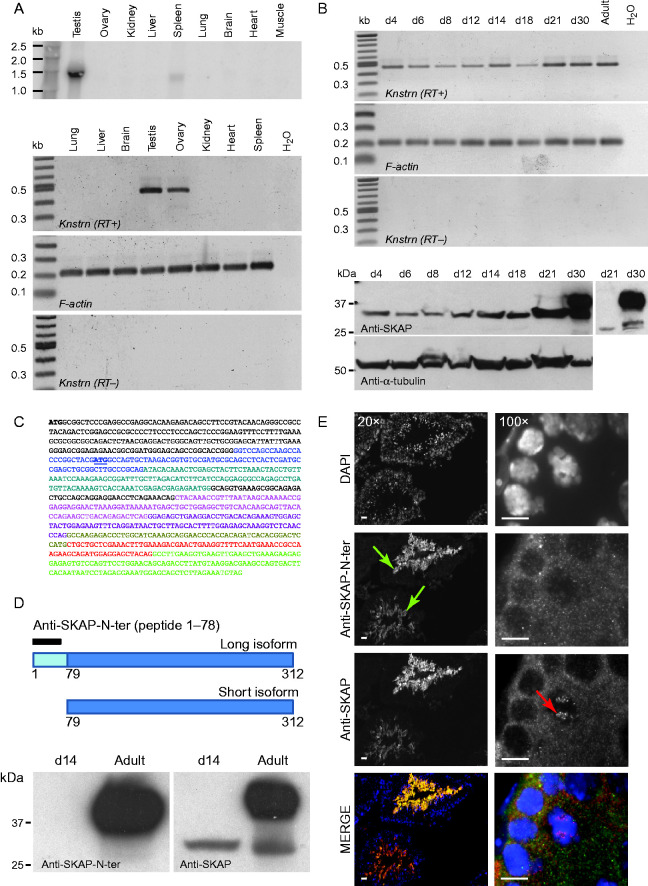Figure 1.
SKAP germline-specific expression. (A) Northern blot (upper panel) and RT-PCR (lower panels) analysis of RNA from various tissues of adult mice. (B) RT-PCR (upper panels) and western blot (lower panels) analysis of SKAP expression in juvenile (day 4–30ppt) and adult mouse testes. Insert in the lower panel: day 21 and 30ppt lanes after shorter exposure. F-actin and anti-α tubulin were used as controls for RT-PCR and western blotting respectively. (C) cDNA sequence of Knstrn, the gene encoding SKAP (NM_026412.3). The alternative in-frame start codon (in blue and underlined) in the second exon encodes a protein that is 9 kDa shorter than full-length SKAP. Different colors represent different exons. (D) Top: cartoon representing the two SKAP isoforms. The region upstream of the alternative start codon is in light blue. The black bar indicates the peptide used to produce the anti-SKAP-N-ter antibody. Bottom: western blotting of juvenile (day 14ppt) and adult testis extracts with the anti-SKAP-N-ter antibody (left panel) and the anti-SKAP antibody. (E) Localization of the long (anti-SKAP-N-ter antibody) and short (anti-SKAP antibody) SKAP isoforms in adult testes. Left panels: seminiferous tubules (20× magnification). Right panels: cells at the periphery of a seminiferous tubule (100× magnification). Green arrows, SKAP-positive spermatids; red arrow, SKAP-positive spermatogonia. Scale bar: 10 μm.

 This work is licensed under a
This work is licensed under a 